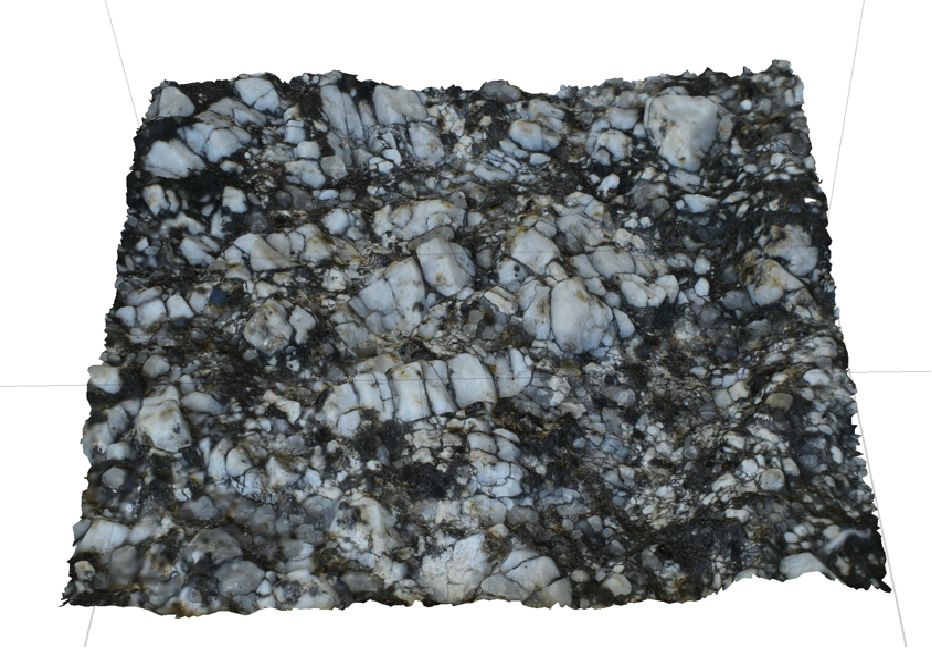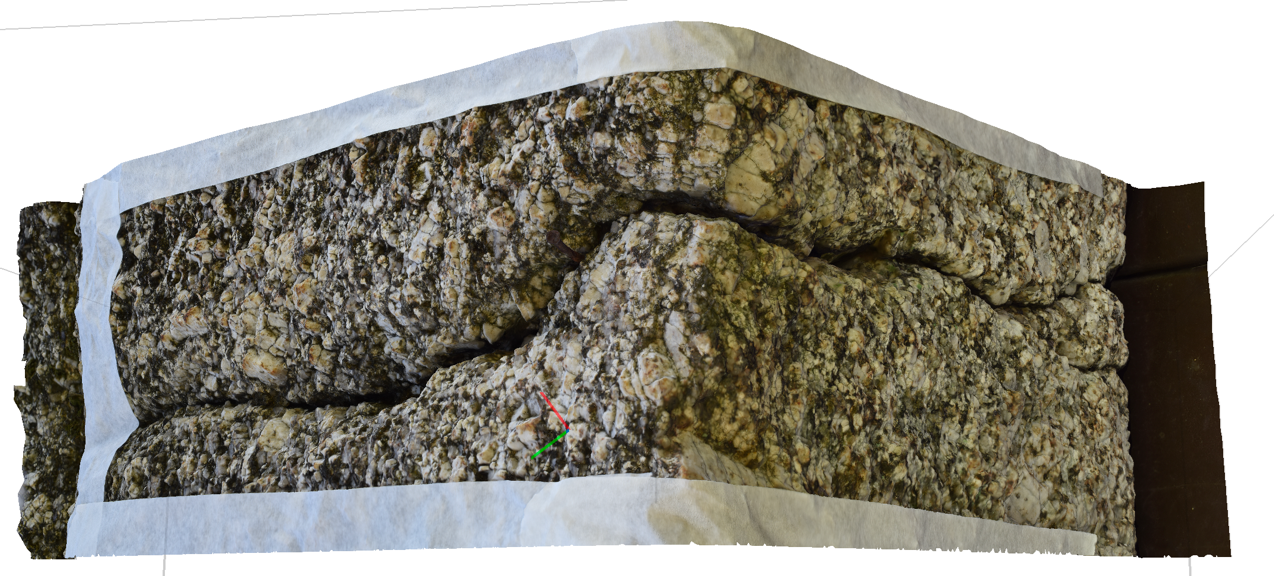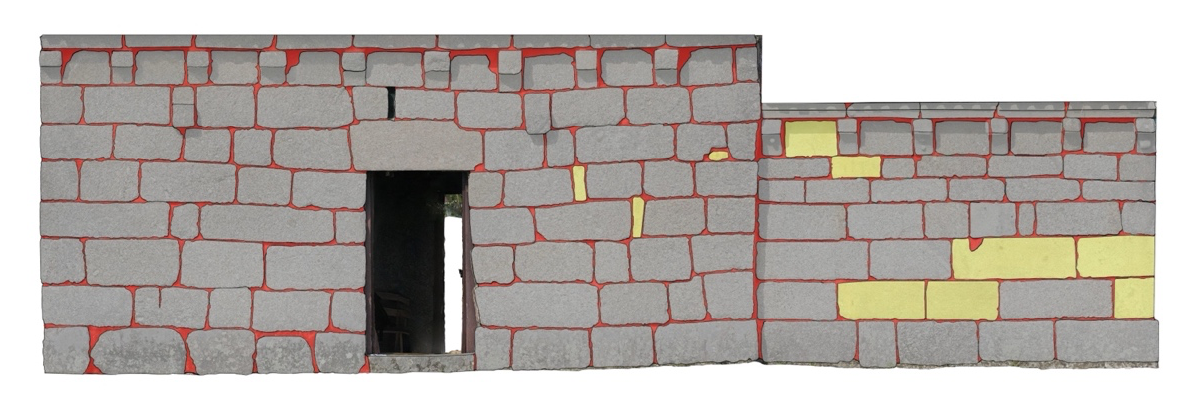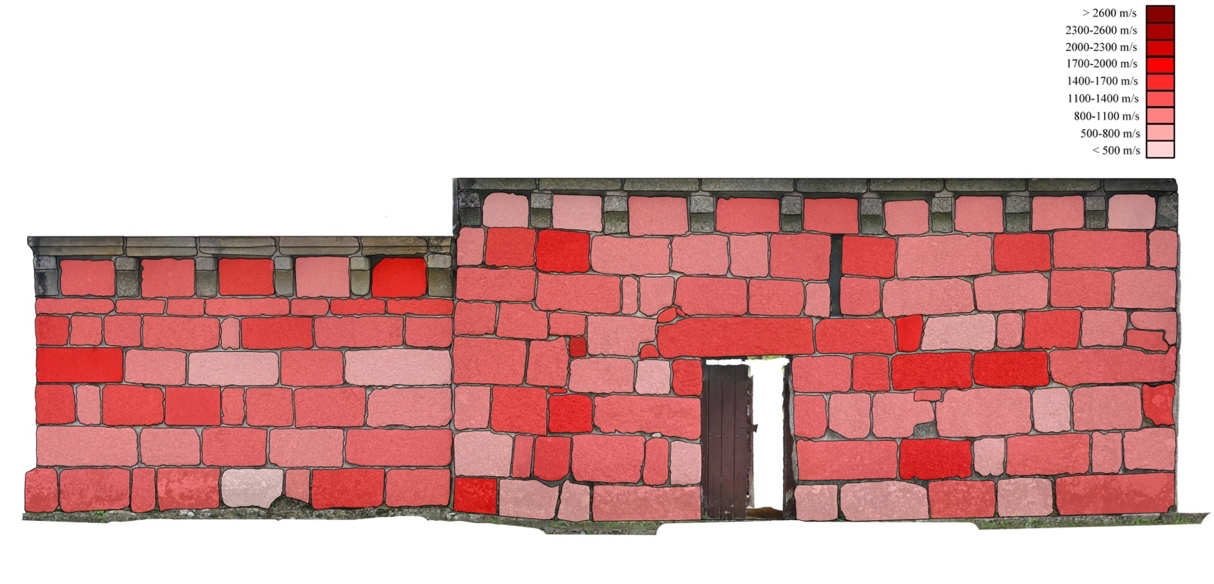To achieve the goal of complete digitalisation of the Romanesque-style rural church of São João de Calvos (Guimarães, Northern Portugal), the team led by Fabio Sitzia (HERCULES – University of Évora / IN2PAST) took advantage of the November fieldwork campaign to also three-dimensionally reproduce the building, in order to be able to analyse the Heritage – Building Information Modelling (H-BIM) protocols.
H-BIM is a digital method for the conservation and management of architectural heritage. Using technologies such as 3D laser scanning, photogrammetry and drones, it creates detailed digital models to analyse conservation status, plan restorations, and monitor structures over time.
The digital survey of the Romanesque-style church in Guimarães integrated 3D recording methodologies based on photogrammetry (precise measurements by photographic methods), enabling the high-resolution capture of the chapel’s architectural and decorative details. The combination of aerial images obtained using UAS (Unmanned Aerial Systems) and terrestrial data ensured an accurate representation of the building’s dimensions and characteristics, while advanced digital processing techniques generated three-dimensional models faithful to the structure’s current state.
The digital model is online available here.
The team used a DJI Mavic 2 drone equipped with a high-precision camera (1″ CMOS sensor with 20 million pixels) for both the aerial survey of the exterior and the image capture of the chapel’s interior. A micro-photogrammetry survey was also conducted, since the final H-BIM model will contain a range of geometric information, useful for monitoring the building.
A Nikon D3300 camera was used to produce reliefs of specific parts of the monument, classified as a Property of Public Interest in 1955, considered as sensitive areas. Among these are areas subject to rain runoff, water rebound or capillary rise and, in general, wall portions affected by fractures. Thanks to the high level of detail offered by this photogrammetry, it is possible to evaluate the surface recession of the stone by repeating the survey for pre-established periods, for example two years.
In addition to these digitisation works, the team also started mapping the types of materials, its mechanical properties and decay, information which will be displayed in the final 3D model through coloured thematic layers (pasted directly with a transparency of 70% so that the underlying raster image can also be viewed).
Another important characterisation performed on the walls was the measurement of the materials’ compressional wave velocities, using an ultrasonic pulse velocity instrument. Compressional wave velocity (Vp) is the speed at which a wave propagates in a series of compressional motions through the material. Higher wave velocities indicate better material quality, assuming the same lithology.

Screenshot of the São João de Calvos 3D model. © IN2PAST

Picture of the North-West elevation of the Church © IN2PAST

Photogrammetric survey reproducing a 10×10 cm surface affected by water runoff from the roof, demonstrating the mechanical degradation of the stone. © IN2PAST


Flat photograph of the south wall. The coloured thematic layers illustrate the various types of geomaterials (granitoids in grey, haplites in yellow and Portand cement binders in red) and the mechanical properties of materials and decay.

‘This non-destructive technique helps detect internal flaws such as cracks, voids, and delamination, ensuring the building’s stability’ and ‘is essential for assessing structural integrity and material conditions without causing damage’, explain the project’s PI and co-PI Fabio Sitzia (HERCULES – University of Évora / IN2PAST) and Jorge Ribeiro (Lab2PT – University of Minho / IN2PAST) in the February 2025 progress report.
Moreover, this method supports restoration planning, providing accurate data for targeted interventions while allowing for long-term monitoring to track structural changes over time.
‘By offering a comprehensive and non-invasive diagnostic tool, ultrasonic testing plays a crucial role in preserving historic buildings effectively’, the researchers state.
The team also carried out chemical, physical, and mechanical characterisations of the two lithotypes identified in the church, obtaining information on their state of degradation and composition, and a petrographic characterisation which allows comparison between material from the monument and quarry material, identifying viable extraction sites for possible replacements of damaged architectural elements.
2025 © IN2PAST. All rights reserved.
IN2PAST – Associate Laboratory for Research and Innovation in Heritage, Arts, Sustainability and Territory is funded by FCT – Fundação para a Ciência e a Tecnologia, I. P. under reference LA/P/0132/2020 (DOI 10.54499/LA/P/0132/2020)